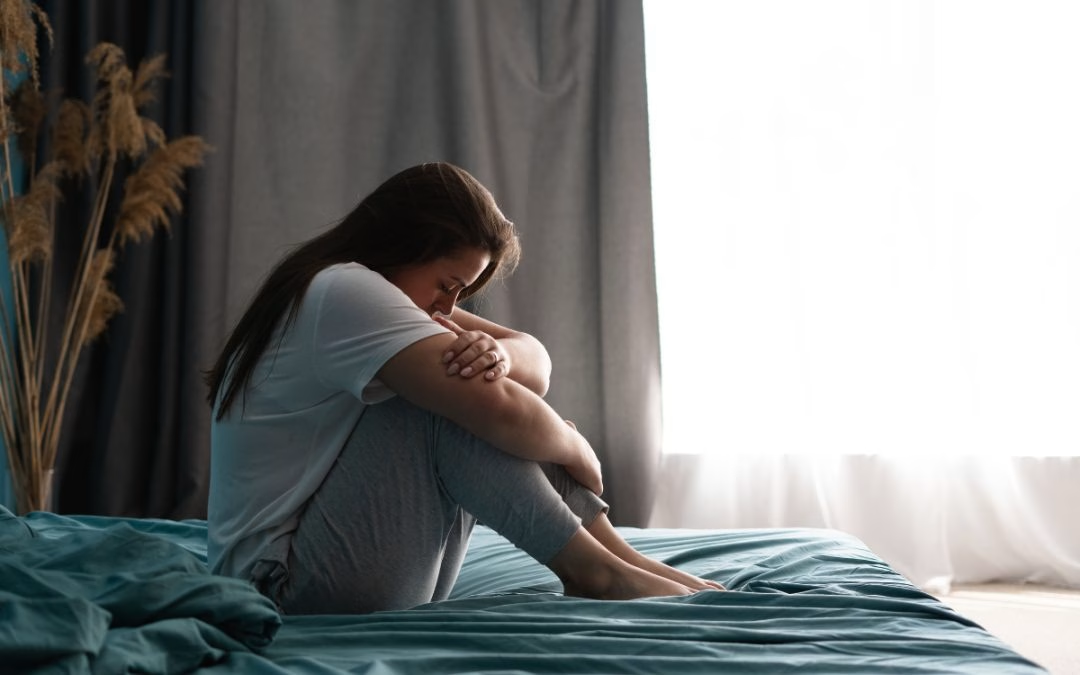
As winter continues in Huntersville, families look forward to seasonal traditions like ice skating at the U.S. National Whitewater Center or exploring the dazzling holiday displays around town. While the winter season brings festive joy for many, others find themselves struggling with low energy, sadness, and a lack of motivation. If you’ve noticed a pattern of feeling down each year when the days get shorter, you may be experiencing Seasonal Affective Disorder (SAD), a form of depression that occurs seasonally, most commonly in the fall and winter months.
What Is Seasonal Affective Disorder (SAD)?
Seasonal Affective Disorder (SAD) is a type of depression that follows a seasonal pattern, typically emerging in late fall or early winter and improving in the spring. It’s more than just the “winter blues” or a temporary slump; it’s a serious condition that can interfere with daily life, making it difficult to enjoy activities, stay productive, or maintain a positive outlook. While SAD most commonly occurs in the colder months, a less common form affects some people in the spring and summer.
Why Does Winter Make Some People Depressed?
Several factors contribute to the onset of SAD, with reduced sunlight exposure being one of the primary triggers. Here’s how winter affects mental health:
- Disrupted Circadian Rhythm: The body’s internal clock, or circadian rhythm, relies on sunlight to regulate sleep, mood, and energy levels. Shorter daylight hours in winter can throw off this natural cycle, leading to feelings of fatigue and sadness.
- Lower Serotonin Levels: Serotonin, a brain chemical that affects mood, is influenced by sunlight. Reduced exposure to daylight can decrease serotonin production, increasing the risk of depression.
- Increased Melatonin Production: The body produces more melatonin in response to darkness, which can lead to excessive sleepiness and lethargy during the day.
What Are the Symptoms of Seasonal Affective Disorder?
SAD shares many symptoms with major depressive disorder, but the key difference is its seasonal pattern. Common symptoms include:
- Persistent feelings of sadness, hopelessness, or irritability
- Loss of interest in activities once enjoyed
- Fatigue and low energy levels, even after a full night’s sleep
- Changes in sleep patterns, including oversleeping or difficulty waking up
- Increased cravings for carbohydrates and weight gain
- Difficulty concentrating or making decisions
- Social withdrawal and isolation
- Feelings of worthlessness or excessive guilt
For those experiencing SAD in the spring and summer, symptoms may include restlessness, anxiety, and weight loss rather than fatigue and oversleeping.
How Can You Manage and Treat SAD?
If you suspect you have SAD, the good news is that several effective treatments can help alleviate symptoms and improve overall well-being.
1. Light Therapy
One of the most effective treatments for SAD is light therapy, which involves sitting in front of a specially designed light box that mimics natural sunlight. Exposure to bright light for 20–30 minutes each morning can help regulate your body’s internal clock and boost serotonin levels.
2. Cognitive Behavioral Therapy (CBT)
CBT is a form of therapy that helps individuals recognize and change negative thought patterns. Research shows that CBT is highly effective in treating SAD by helping people develop coping strategies to manage seasonal depression.
3. Medication
For some, antidepressant medications such as Selective Serotonin Reuptake Inhibitors (SSRIs) can help balance brain chemistry and reduce symptoms of SAD. If your symptoms are severe or persistent, a healthcare provider may recommend medication as part of your treatment plan.
4. Lifestyle Changes
Making small adjustments to your daily routine can have a significant impact on managing SAD symptoms:
- Get outside: Even on cloudy days, natural light exposure can help. Try taking a walk around Huntersville’s parks or greenways.
- Exercise regularly: Physical activity releases endorphins, which naturally boost mood and energy levels.
- Eat a healthy diet: A balanced diet rich in protein, fruits, and vegetables can help regulate mood and energy.
- Stick to a sleep schedule: Maintaining a consistent sleep-wake cycle can improve overall well-being.
When Should You Visit AFC Huntersville?
While mild cases of SAD can be managed with lifestyle changes, it’s essential to seek professional care if your symptoms interfere with daily life. At AFC Huntersville, our experienced medical team can evaluate your symptoms, rule out other potential causes, and recommend appropriate treatment options. We can also provide referrals to mental health specialists if needed.
Visit us if you experience:
- Persistent feelings of sadness or hopelessness
- Difficulty completing daily tasks due to low energy or lack of motivation
- Changes in sleep or appetite that impact your overall health
- Thoughts of self-harm or severe emotional distress
Take Control of Your Mental Health This Winter
Winter in Huntersville offers plenty of seasonal joy, from festive events to cozy family gatherings. Don’t let Seasonal Affective Disorder prevent you from enjoying the season. If you’re feeling persistently down during the colder months, seeking help early can make all the difference.
At AFC Huntersville, we’re here to support you with compassionate care and guidance. Visit us today to take the first step toward feeling better and making the most of winter.


